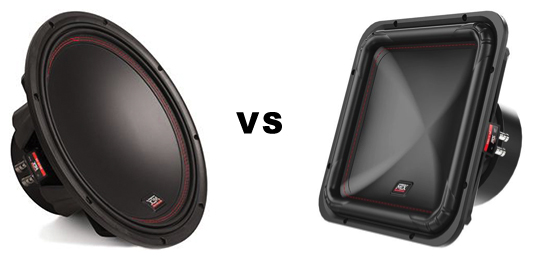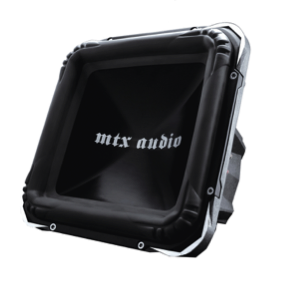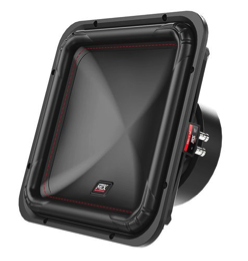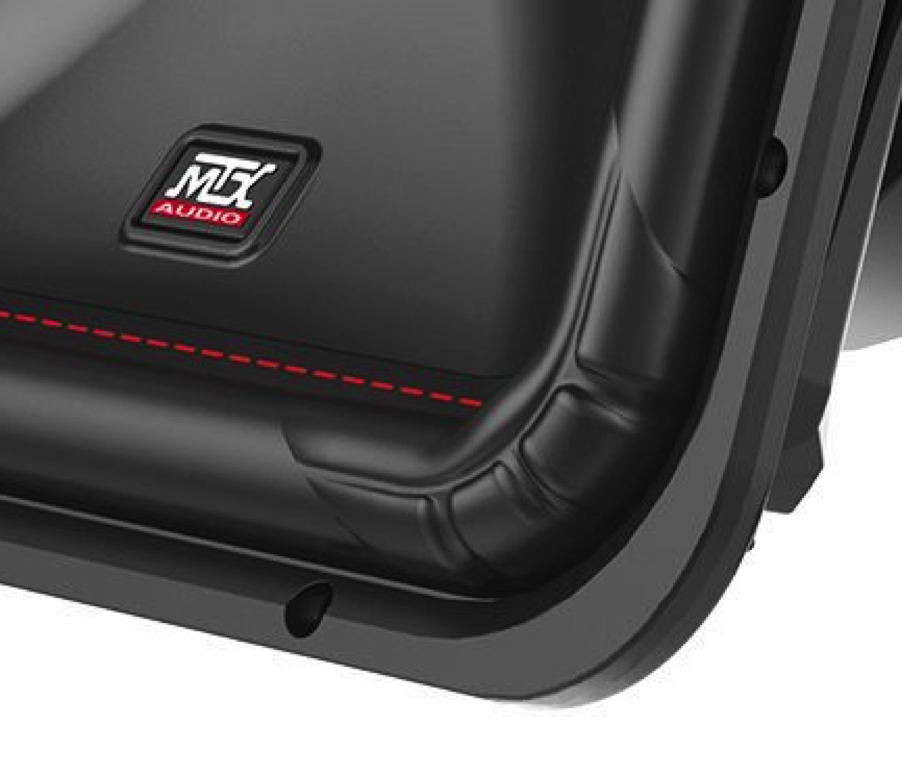Return to the library.
Square Subwoofers vs. Round Subwoofers
Which are better, square subwoofers or round subwoofers? If you’ve been around car audio for even a couple of months, you’ve probably at least heard the debate about which is better. Everyone will offer their opinion and some will offer their experiences but opinions on this topic are a dime a dozen and there is no clear-cut winner. Just like our article about which is better, “Sealed vs. Ported Enclosures”, the only correct answer is… It depends.

CLICK HERE FOR MORE INFORMATION ABOUT SEALED VS. PORTED ENCLOSURES
There are many different shapes of subwoofers out there. Square and round subwoofers seem to be the most common but there are also triangle shaped subs, hexagonal shaped subs, and even pentagonal shaped subwoofers.

Why so many shapes? The common answer you will get is marketing. Some people think that the different shapes of subwoofers are just marketing gimmicks used to sell more subwoofers, and in some cases, they may be right, but science and physics suggest there may be more to these uniquely shaped subwoofers. Technically speaking, a square subwoofer, or any other shape that has a cone area larger than the same sized round subwoofer (12” square vs. 12” round, 10” square vs. 10” round, etc…), is capable of moving more air than the same subwoofer in a round shape. A subwoofer that moves more air generates more output (and more SPL), which means it is capable of being louder than a comparable round subwoofer.
CLICK HERE FOR MORE INFORMATION ABOUT SOUND QUALITY VS. SPL
However, before you can simply claim that square subwoofers are louder than round subwoofers, you have to consider some other factors. Do the subwoofers you are comparing have the same RMS power handling? Is the Xmax of the square subwoofer the same as the round subwoofer? What are the differences in sensitivity between the square subwoofer and the round subwoofer? All of these specifications need to be considered before a person can simply claim one subwoofer is louder or better than another.
Just because a square subwoofer is capable of moving more air due to increased cone area doesn’t mean it is actually moving more air.
Square subwoofers are a challenging design because the 90-degree corners of the surrounds need to move consistently with the straight edges of the surround in order to keep the motion of the subwoofer linear. If a subwoofer’s movement is not linear, the sub will have high levels of distortion and will be at more risk for shorting out the voice coil if it rubs against the pole piece of the subwoofer’s chassis. Designing any shape of a surround that has varying angles and is not the same all the way around is a big challenge.
Some square subwoofer manufacturers choose to make their surround stiff and rigid to limit the amount of excursion (the distance the cone of the subwoofer moves back and forth) so their square surround won’t move to a point where the subwoofer could lose linearity thus creating quality problems. Sometimes manufacturers will even support a stiff surround with a stiff spider suspension. In these cases, the square subwoofer that is supposed to be louder than a round subwoofer may not actually be louder because the inadequacies in the design of the surround had to be compensated by limiting the amount of excursion (or Xmax). If a square subwoofer’s length of travel (excursion) is less than a round subwoofer, it may not be able to move as much air even with it’s larger cone area.
Sometimes the RMS power handling of a square subwoofer is lower than a comparable round subwoofer. In these cases, the manufacturers are generally trying to limit the amount of power being sent to the woofer in order to prevent too much excursion because the surround of the square subwoofer can’t handle it. In these cases, a round subwoofer may also be louder than a square subwoofer.
Finally, the efficiency, or sensitivity, or a subwoofer is also a very important factor when determining which shape sub will be louder. If a subwoofer has an RMS power handling of 1000 watts but has a cone assembly that is very heavy and hard to move, it may not have as much output as a subwoofer that has an RMS power handling of 750 watts with a lightweight cone assembly that travels easily and has a higher Xmax. This comes down to sensitivity and efficiency.
CLICK HERE FOR INFORMATION ABOUT SUBWOOFER POWER HANDLING & EFFICIENCY
Sometimes, a manufacturer will rate their subwoofers with extremely high power ratings to make the customer feel as though they are buying an extremely powerful subwoofer. But if the subwoofer has a very heavy cone assembly, a lot of the power that it is capable of handling is used to move the heavy cone and not all of the power actually translates into output.
So, when debating which is louder, square subwoofers or round subwoofers, there is not a single, all-encompassing answer that will always apply. Differences in subwoofer design, power handling, Xmax/excursion, and sensitivity/efficiency will all determine the answer on a case-by-case basis. Even the specific vehicle a subwoofer is installed in can be a contributing factor to the subwoofer’s performance based on the acoustical characteristics of the vehicle’s interior.
However, if the comparison between square subwoofers and round subwoofers is done in the same vehicle and with subwoofers that have comparable RMS power handling ratings, comparable sensitivity specifications, comparable suspension travel (Xmax), are connected to the same amplifier, and are both installed in their recommended enclosure that is tuned correctly, the square subwoofer will typically be louder than a round subwoofer.
So why wouldn’t everybody buy square subwoofers you might ask…
We haven’t talked at all about sound quality. While square subwoofers have more surface area to move more air, traditional round subwoofers are generally better sounding because they are easier to control. The more accurately the subwoofer is controlled the higher the sound quality reproduced.
If square subs can be louder than round subs, why wouldn’t all subwoofer manufacturers offer square subs?
You’d have to ask the other manufacturers that question but patents could be their problem. There are patents on square subwoofer designs that prevent other manufacturers from copying specific parts. If they cannot design a square subwoofer that is as good or better than their competition without infringing on these patents, they probably decide not to do it.
For example, the MTX TS55, TS85, and S65 series square subwoofers all feature patented surround geometry (US Patent #7,275,620) which details a specific design and construction of the surround corners that allows them to roll and move in a manner that keeps the subwoofer linear and allows for increased Xmax. This surround design also helps to keep the subwoofer’s travel linear which results in improved sound quality. This is a proprietary design by our team of USA based engineers that no other brand of square subwoofers will have.




So the next time you hear some of your car audio buddies getting into a debate about which is better, round subwoofers or square, simply tell them… It depends.
At the end of the day, there is no right or wrong answer. The real answer depends on which square and which round subwoofers are being compared against each other.
Buy what sounds good and looks good to you. If your buddy wants to tell you what to buy, ask him if he will help pay for them too!
CLICK HERE FOR MORE INFORMATION ABOUT CAR AUDIO AMPLIFIER POWER RATINGS
